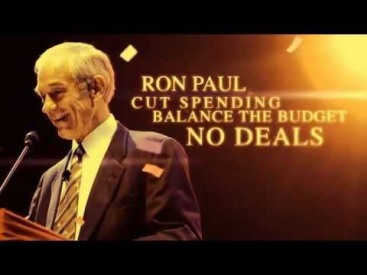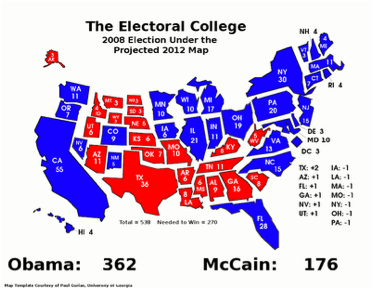Archive
How do Presidential Candidates Get Votes Today?
The exponential growth of social media has introduced television, radio announcements, and the Internet as major influences on Presidential Elections. An individual candidate’s success is greatly affected by his own advertisements, as well as publicity produced and released by other candidates. The distribution of votes relies immensely on the strength and effects of candidates’ campaign commercials. Through viewing candidates’ commercials from previous elections, along with the boundless current campaign ads advertising for this year’s election, I have grasped an understanding of the various techniques used to influence voters. Campaign commercials are classified by their unique rhetorical strategy; the effects campaign commercials have on their audience is dependent on emotional appeal, persuasive ability, integration of factual claims, and techniques pertaining to cinematic style.
Emotional appeal is essential in stimulating a reaction within the audience. Presidential candidates utilize this rhetorical device as motivation for voters to support them. President Obama sparks emotion through his campaign commercial concerning the raid on Osama Bin Laden. By claiming Candidate Romney’s judgment would have prevented the attack defeating the man who had a role in “killing 3,000 Americans,” Obama uses the Bin Laden example to demonstrate the possible detrimental consequences that would occur should he not be re-elected. By threatening potential damage to their personal lives and using harsh diction to provoke emotions, Obama encourages citizens to vote for him. Manipulating the emotions of voters is key in sustaining a successful candidacy.
 A candidate’s accomplishments rely majorly on his persuasive abilities. When a candidate directly promises changes voters want to see, they are inclined to vote for him in hopes of attaining the desired results. Mitt Romney demonstrates a persuasive technique in his advertisement “Strong New Leadership.” He proclaims change within America: “This is not a time for more talk and dithering in Washington; it’s a time for action.” Romney confidently declares that he intends to execute his ideas, assuring success and gaining voters’ trust. The ability to persuade is a quality vital to every successful Presidential candidate’s campaign.
A candidate’s accomplishments rely majorly on his persuasive abilities. When a candidate directly promises changes voters want to see, they are inclined to vote for him in hopes of attaining the desired results. Mitt Romney demonstrates a persuasive technique in his advertisement “Strong New Leadership.” He proclaims change within America: “This is not a time for more talk and dithering in Washington; it’s a time for action.” Romney confidently declares that he intends to execute his ideas, assuring success and gaining voters’ trust. The ability to persuade is a quality vital to every successful Presidential candidate’s campaign.
Voters want to see physical results. By presenting factual information and proving effectiveness, a candidate becomes reliable. Throughout his campaign commercial, “Go” Obama is portrayed as a dependable candidate. He advertises achievements during his current term as President: “Our greatest enemy brought to justice by our greatest heroes,” and “Instead of losing jobs, we’re creating them … over 4.2 million so far.” By promoting his prior accomplishments, Obama uses solidified claims to guarantee reliability and future success. The voters’ trust is crucial in winning an election. Factual and concrete information guides nominees in acquiring the fundamental and imperative trust needed to thrive as a Presidential candidate.
While content is the core of campaign commercials, much credit is due to the cinematic style of the advertisements. The music and sound effects, setting, tone and voice all contribute to the effectiveness of the commercial. Before the subject matter can be noticed and concentrated on, the audience’s attention must be attracted to the television screen, radio, or webpage. Ron Paul’s campaign ad, “Conviction,” cleverly entrances the audience and efficiently depicts the intended message. Paul utilizes loud and dramatic music, bold and flashy displays, and a strong voice to draw attention to his advertisement. Cinematic technique is the underlying importance in generating a successful campaign commercial.
Various approaches are taken by Presidential candidates to win votes through campaign commercials. A successful candidate must manage the emotions of voters, persuade with promise of change, illustrate the facts, and incorporate attention-grabbing style into his commercials. The methods taken in an effective commercial are evident. After extensive analysis from modern commercials to those dating back to the 1960s, it is easy to evaluate the techniques being used in present-day campaign commercials. Every candidate chooses a distinct style to accentuate each of his commercials, amplify his strengths and influence voters.
Electoral College
During our third-trimester studies, we covered many fascinating topics and discussed concepts concerning the United States Government with great detail and thorough analysis. I found our discussions concerning the Electoral College particularly interesting and appealing. Under the Electoral College, voters in each state choose electors to represent their state at the gathering in which the President is elected. The Electoral College has proved a controversial topic throughout the years since its establishment, but has endured critique and still remains an essential component of our system of elections today. I believe the Electoral College should sustain a role in the Presidential nominating process for two reasons: 1) The Electoral College originated as a compromise generating peace and agreement among both U.S. citizens and the framers of the process; and 2) Through the system, smaller and less popular states are provided with opportunity for their opinions to be heard.
Being promised a democratic system of government, citizens of the U.S. expect to have influence when electing the leader of their nation. The idea of a direct vote appealed to citizens, but framers of the Electoral College worried this right could become dangerous in certain conditions. The framers suggested that by having a direct vote in presidential elections, citizens could end up with too much power. They preferred a system involving a select group of wise citizens meeting to decide which candidate should be elected. The citizens and the framers each had their own ideas for an ideal electoral system, but both extremes could not be reached. The framers desired a system far from the promised democracy and citizens had the urge to take advantage of the democratic system. A compromise between the two oppositions was necessary to end conflict. The Electoral College was the compromise each side sought. Within the new system, citizens were given the chance to voice their opinion while control was still maintained over the process.
Citizens occupying smaller states worried larger states would hold power over elections and dominate elections. No political parties had been established at the time of the debate over the Electoral College, and smaller states were concerned with the existing concept of the “favorite son,” or the most popular candidate. This politician was promoted by its state and the “favorite son” of larger states would always be elected under a system of popular vote. Through the system of the Electoral College, a candidate must receive a majority of the 538 Electoral College votes available. An individual candidate must attain at least 270 votes to be nominated for the position of President of the United States. When no candidate receives half the electoral votes and votes are scattered among various candidates, the House of Representatives is left to regulate the decision. Under these conditions, the House awards each state one vote. With this vote, representatives of the state must agree on one candidate in which to award their vote. The Electoral College creates a more inclusive and consensual decision by providing equal opportunity to all states to elect the president.
America’s system of democracy relies on the Electoral College as an equalizing and balancing system essential to the election process. The system provides a compromise. Less populous states stand chances, equal to those of larger states, to elect their “favorite sons.” The concern citizens could ultimately attain too much power was settled by the Electoral College. The Electoral College is crucial in creating a middle ground among U.S. Citizens and the Government, granting citizens enough power to reach their expectations of a democracy while still allowing the government to monitor and maintain control over the process.


